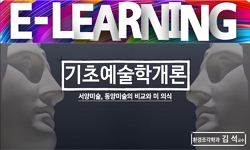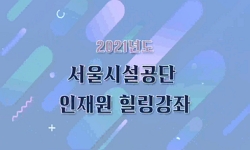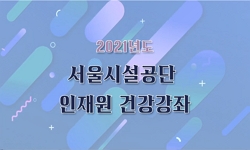This thesis aims to understand the correlation between the representation of Confucian cultural orthodoxy in the Royal Capital City and the transformation of shamanic culture in the Chosun Dynasty. To Confucianists, the Royal Capital City, present-day...
http://chineseinput.net/에서 pinyin(병음)방식으로 중국어를 변환할 수 있습니다.
변환된 중국어를 복사하여 사용하시면 됩니다.
- 中文 을 입력하시려면 zhongwen을 입력하시고 space를누르시면됩니다.
- 北京 을 입력하시려면 beijing을 입력하시고 space를 누르시면 됩니다.

조선시대 王都의 신성화와 무속문화의 추이 : 법제를 통한 淫祀정책과 서울에 대한 문화의식을 중심으로 = The Sacralization of the Royal Capital City and the Change of Shamanic Culture in Chosun Dynasty
한글로보기https://www.riss.kr/link?id=A40005013
-
저자
최종성 (서울대학교 인문학연구원)
- 발행기관
- 학술지명
- 권호사항
-
발행연도
2003
-
작성언어
Korean
-
주제어
왕도의 신성화 ; 서울 ; 문화적 전통의식 ; 王都 ; 儒敎 ; 巫俗 ; 朝鮮 ; Sacralization of the Royal Capital ; Seoul ; Confucianism ; Musok ; cultural orthodoxy ; Chosun
-
KDC
911.000
-
등재정보
KCI등재후보
-
자료형태
학술저널
-
수록면
37-57(21쪽)
-
KCI 피인용횟수
6
- 제공처
- 소장기관
-
0
상세조회 -
0
다운로드
부가정보
다국어 초록 (Multilingual Abstract)
This thesis aims to understand the correlation between the representation of Confucian cultural orthodoxy in the Royal Capital City and the transformation of shamanic culture in the Chosun Dynasty. To Confucianists, the Royal Capital City, present-day Seoul, was the center of Confucian culture. Confucianists sought to establish Seoul as the center of virtuous Confucian rule. Confucian cultural orthodoxy defined the geographic extent of Seoul from their religious view.
It appears that Confucianism built up cultural identity through exclusion non-confucian cultures (Buddhism, Taoism, Shamanism, etc.). Throughout the Chosun period, in order to preserve the cultural and religious symbolic meaning of Seoul, Confucianism regarded non-confucian cultures as wrong ways (left ways) and excessive rites (improper rites), and drove them from the Royal Capital by means of legal systems. Musok (Korean shamanism) was the very representative religious culture that was criticized and suppressed by Confucianism. Through control over shamans and shamanism, Confucianism sought to maintain the cultural purity and sacredness of Seoul.
As Seoul developed and expanded, the policies of sacralization of the Royal Capital City have changed. First, in the first half of the Chosun dynasty, shamans were forbidden to enter the walled city by law as prescribed in Kyongkukdaejon (經國大典). At this time, the boundary of sacralization of Seoul was limited within the city wall (都城內). Second, in the second half of the Chosun dynasty, Confucian government applied more strict legal sanction against Musok religious culture to the distance of 4 kilometers from the city wall (城外十里) as the provision of Sokdaejon (續大典). Finally, in the late eighteenth century, the region of sacralization of Seoul extended to well beyond the Han River (江外), according to the provision Daejontongpyon (大典通編). Chosun government was able to completely expel the shamans and shaman cultures from all parts of Seoul.
Legal systems behind control over Musok were not only oppressions of heresy, non-orthodoxy, other religious tradition but also expressions of the Confucian culture in Seoul. Through this analysis of change and characteristic of legal systems for preserving the Royal Capital City, one can understand both religious consciousness of Seoul and history of correlation between Confucianism and Musok.
목차 (Table of Contents)
- Ⅰ. 서론
- Ⅱ. 王都에 대한 문화적 정통의식
- Ⅲ. 조선전기의 음사정책 : 城外黜巫
- Ⅳ. 조선후기 王都에 대한 정통의식의 강화 : 江外黜巫
- Ⅴ. 결론
- Ⅰ. 서론
- Ⅱ. 王都에 대한 문화적 정통의식
- Ⅲ. 조선전기의 음사정책 : 城外黜巫
- Ⅳ. 조선후기 王都에 대한 정통의식의 강화 : 江外黜巫
- Ⅴ. 결론
동일학술지(권/호) 다른 논문
-
- 서울시립대학교 부설 서울학연구소
- 尹京鎭
- 2003
- KCI등재후보
-
일제식민지 치하 경성부민의 도시적 감수성 형성과정 연구
- 서울시립대학교 부설 서울학연구소
- 강심호
- 2003
- KCI등재후보
-
- 서울시립대학교 서울학연구소
- 송희경(Song Hee-Kyong)
- 2003
- KCI등재후보
분석정보
인용정보 인용지수 설명보기
학술지 이력
| 연월일 | 이력구분 | 이력상세 | 등재구분 |
|---|---|---|---|
| 2025 | 평가예정 | 재인증평가 신청대상 (재인증) | |
| 2022-01-01 | 평가 | 등재학술지 선정 (계속평가) |  |
| 2020-01-01 | 평가 | 등재후보학술지 선정 (신규평가) |  |
| 2019-12-01 | 평가 | 등재후보 탈락 (계속평가) | |
| 2018-12-01 | 평가 | 등재후보로 하락 (계속평가) |  |
| 2015-01-01 | 평가 | 등재학술지 유지 (등재유지) |  |
| 2011-01-01 | 평가 | 등재학술지 유지 (등재유지) |  |
| 2009-01-01 | 평가 | 등재학술지 유지 (등재유지) |  |
| 2008-10-02 | 학술지명변경 | 한글명 : 서울학연구 -> 서울학연구 |  |
| 2006-01-01 | 평가 | 등재학술지 선정 (등재후보2차) |  |
| 2005-01-01 | 평가 | 등재후보 1차 PASS (등재후보1차) |  |
| 2004-01-01 | 평가 | 등재후보 1차 FAIL () |  |
| 2003-01-01 | 평가 | 등재후보학술지 선정 (신규평가) |  |
학술지 인용정보
| 기준연도 | WOS-KCI 통합IF(2년) | KCIF(2년) | KCIF(3년) |
|---|---|---|---|
| 2016 | 0.63 | 0.63 | 0.68 |
| KCIF(4년) | KCIF(5년) | 중심성지수(3년) | 즉시성지수 |
| 0.61 | 0.62 | 1.483 | 0.14 |




 RISS
RISS DBpia
DBpia







